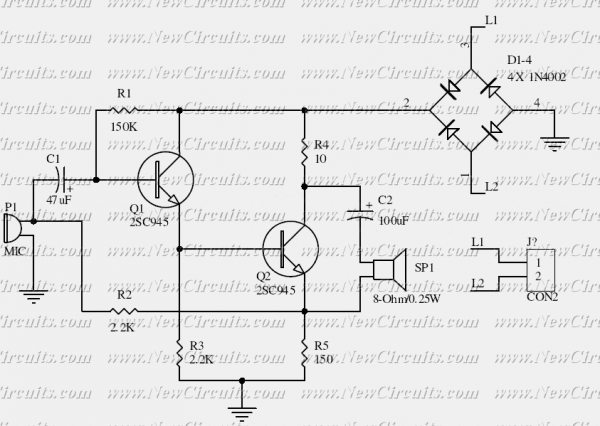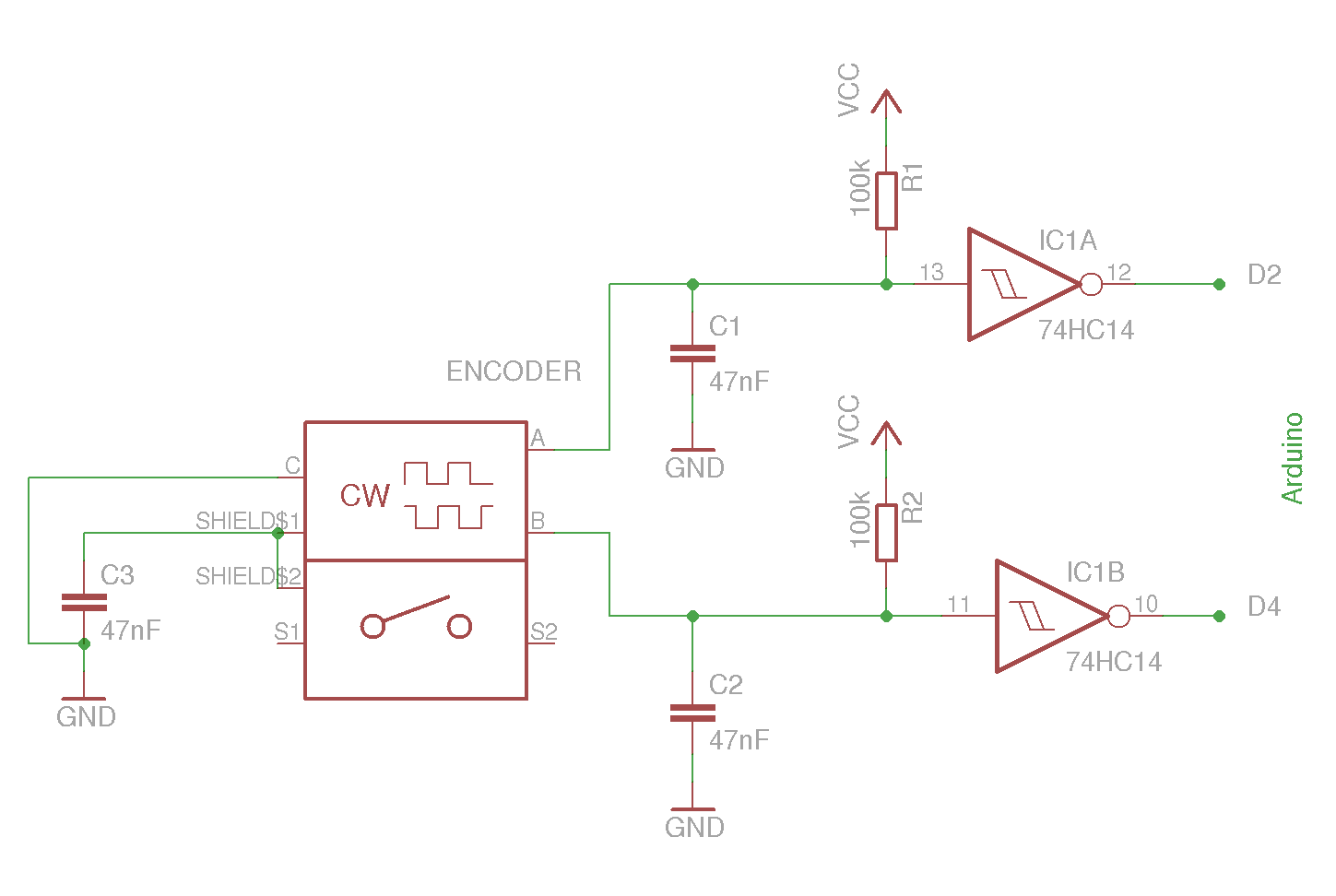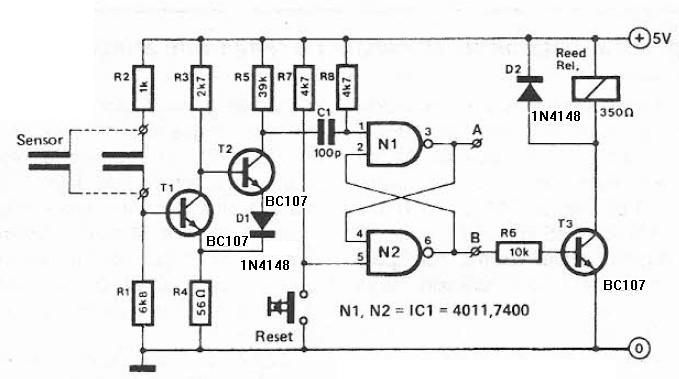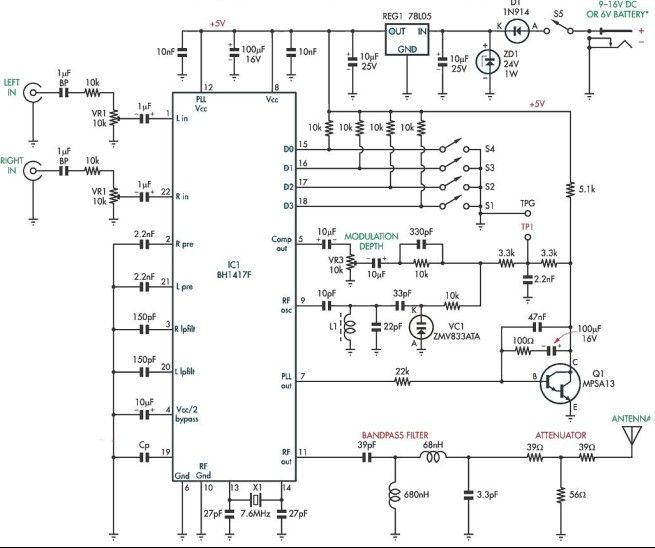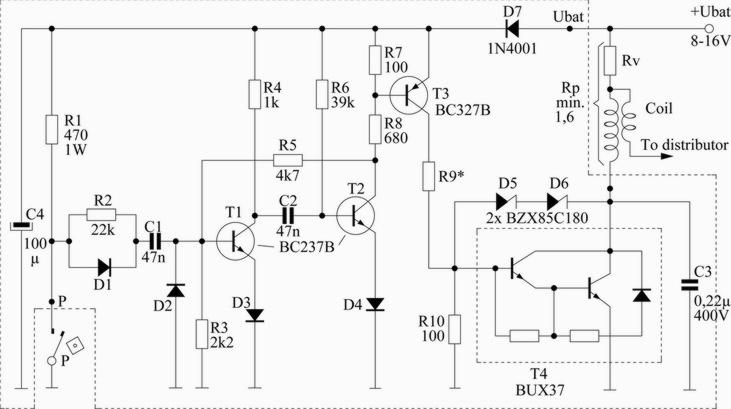
Electronic Dice
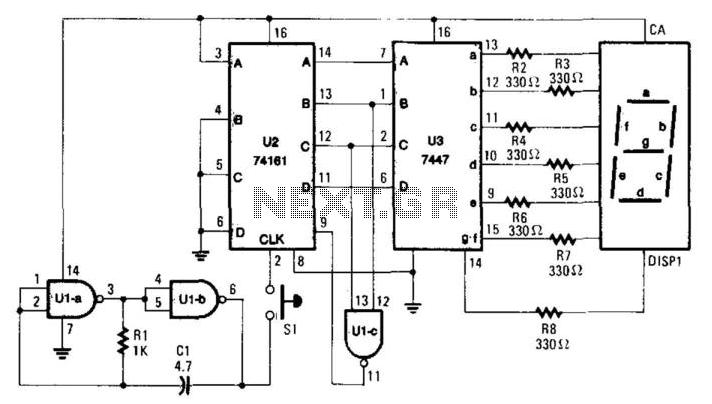
When the switch SI is activated, the counter U2 is controlled by the oscillator U1A/U1B, and the count ranging from 0 to 6 is displayed on DISP1. The resistor R1 and capacitor C1 determine the count rate, which must be sufficiently rapid to produce a "random" count.
The circuit involves a switch SI that serves as an input trigger for the operation of the counter U2. Upon pressing the switch, the oscillator circuit formed by U1A and U1B generates a clock signal that drives the counter U2. The counter U2 is capable of counting from 0 to 6, and the current count value is presented on the display unit DISP1, which is likely a seven-segment display or similar output device.
The components R1 and C1 play a crucial role in setting the timing characteristics of the oscillator. The resistor R1, in conjunction with the capacitor C1, defines the frequency of oscillation, which directly influences the speed at which the counter increments. A faster count rate is essential for achieving a random count, as it minimizes the likelihood of repeated values appearing in quick succession.
In practical applications, the values of R1 and C1 should be selected to ensure that the frequency of the oscillator is high enough to provide a smooth and continuous count without noticeable gaps. This can be achieved by using a combination of standard resistor and capacitor values, calculated based on the desired frequency of operation. Additionally, the design may incorporate debouncing techniques for the switch SI to prevent false triggering due to mechanical bounce when the switch is pressed.
The output from the counter U2 can be further utilized in various applications, such as in games, random number generation, or other electronic systems requiring a non-repetitive counting mechanism. The overall design emphasizes reliability, speed, and clarity in the output display to ensure effective user interaction. When SI is pressed, counter U2 is driven by oscillator U1A/U1B and the count (0 through 6) is read on DISP1. Rl and CI dete rmine the count rate, which should be fast enough to ensure a "random" count.
The circuit involves a switch SI that serves as an input trigger for the operation of the counter U2. Upon pressing the switch, the oscillator circuit formed by U1A and U1B generates a clock signal that drives the counter U2. The counter U2 is capable of counting from 0 to 6, and the current count value is presented on the display unit DISP1, which is likely a seven-segment display or similar output device.
The components R1 and C1 play a crucial role in setting the timing characteristics of the oscillator. The resistor R1, in conjunction with the capacitor C1, defines the frequency of oscillation, which directly influences the speed at which the counter increments. A faster count rate is essential for achieving a random count, as it minimizes the likelihood of repeated values appearing in quick succession.
In practical applications, the values of R1 and C1 should be selected to ensure that the frequency of the oscillator is high enough to provide a smooth and continuous count without noticeable gaps. This can be achieved by using a combination of standard resistor and capacitor values, calculated based on the desired frequency of operation. Additionally, the design may incorporate debouncing techniques for the switch SI to prevent false triggering due to mechanical bounce when the switch is pressed.
The output from the counter U2 can be further utilized in various applications, such as in games, random number generation, or other electronic systems requiring a non-repetitive counting mechanism. The overall design emphasizes reliability, speed, and clarity in the output display to ensure effective user interaction. When SI is pressed, counter U2 is driven by oscillator U1A/U1B and the count (0 through 6) is read on DISP1. Rl and CI dete rmine the count rate, which should be fast enough to ensure a "random" count.

